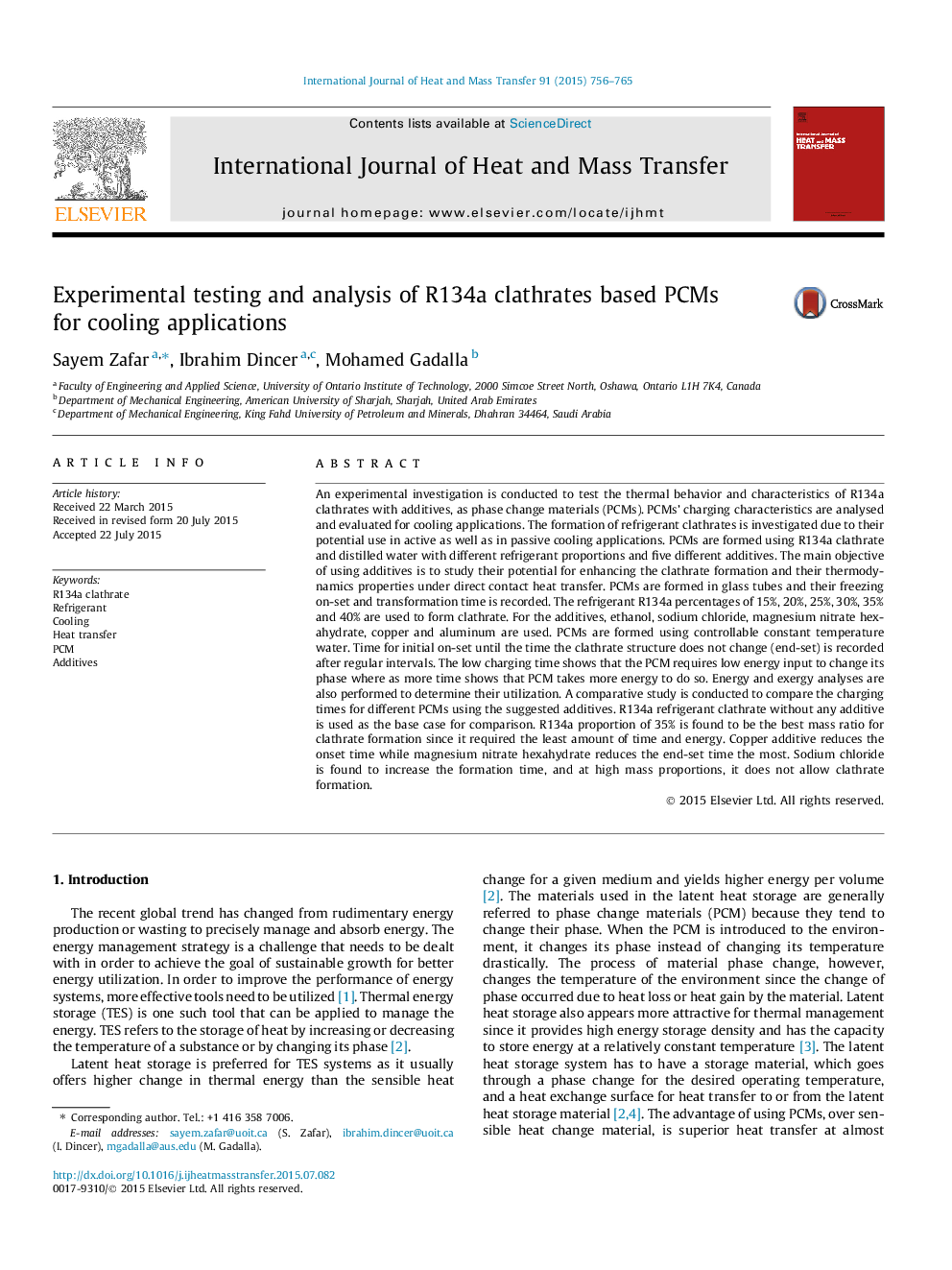| کد مقاله | کد نشریه | سال انتشار | مقاله انگلیسی | نسخه تمام متن |
|---|---|---|---|---|
| 7056389 | 1458051 | 2015 | 10 صفحه PDF | دانلود رایگان |
عنوان انگلیسی مقاله ISI
Experimental testing and analysis of R134a clathrates based PCMs for cooling applications
دانلود مقاله + سفارش ترجمه
دانلود مقاله ISI انگلیسی
رایگان برای ایرانیان
کلمات کلیدی
موضوعات مرتبط
مهندسی و علوم پایه
مهندسی شیمی
جریان سیال و فرایندهای انتقال
پیش نمایش صفحه اول مقاله

چکیده انگلیسی
An experimental investigation is conducted to test the thermal behavior and characteristics of R134a clathrates with additives, as phase change materials (PCMs). PCMs' charging characteristics are analysed and evaluated for cooling applications. The formation of refrigerant clathrates is investigated due to their potential use in active as well as in passive cooling applications. PCMs are formed using R134a clathrate and distilled water with different refrigerant proportions and five different additives. The main objective of using additives is to study their potential for enhancing the clathrate formation and their thermodynamics properties under direct contact heat transfer. PCMs are formed in glass tubes and their freezing on-set and transformation time is recorded. The refrigerant R134a percentages of 15%, 20%, 25%, 30%, 35% and 40% are used to form clathrate. For the additives, ethanol, sodium chloride, magnesium nitrate hexahydrate, copper and aluminum are used. PCMs are formed using controllable constant temperature water. Time for initial on-set until the time the clathrate structure does not change (end-set) is recorded after regular intervals. The low charging time shows that the PCM requires low energy input to change its phase where as more time shows that PCM takes more energy to do so. Energy and exergy analyses are also performed to determine their utilization. A comparative study is conducted to compare the charging times for different PCMs using the suggested additives. R134a refrigerant clathrate without any additive is used as the base case for comparison. R134a proportion of 35% is found to be the best mass ratio for clathrate formation since it required the least amount of time and energy. Copper additive reduces the onset time while magnesium nitrate hexahydrate reduces the end-set time the most. Sodium chloride is found to increase the formation time, and at high mass proportions, it does not allow clathrate formation.
ناشر
Database: Elsevier - ScienceDirect (ساینس دایرکت)
Journal: International Journal of Heat and Mass Transfer - Volume 91, December 2015, Pages 756-765
Journal: International Journal of Heat and Mass Transfer - Volume 91, December 2015, Pages 756-765
نویسندگان
Sayem Zafar, Ibrahim Dincer, Mohamed Gadalla,